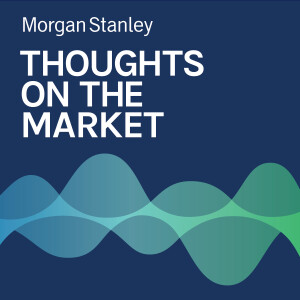
The tactical rally in stocks has continued and treasury bonds have experienced their own rally, leaving investors to wonder when this bear market might run out of steam.
----- Transcript -----
Welcome to Thoughts on the Market. I'm Mike Wilson, Chief Investment Officer and Chief U.S. Equity Strategist for Morgan Stanley. Along with my colleagues, bringing you a variety of perspectives, I'll be talking about the latest trends in the financial marketplace. It's Monday, December 5th, at 11 a.m. in New York. So let's get after it.
Last week, the tactical rally in stocks took another step forward after Fed Chair Jay Powell's speech at the Brookings Institution. After his comments and interview, long term Treasury yields came down sharply and continued into the end of the week. This sparked a similar boost higher in equities, led by the most interest rate sensitive and heavily shorted stocks. This fits nicely with our view from a few weeks ago, which suggests that any further rally would require lower long term interest rates. It also makes sense in the context of what we think has been driving this tactical rally in the first place - the growing hope for a Fed pivot that kick saves the economic cycle from a recession.
So maybe the biggest question is why did Treasury bonds rally so much? First, we think it mostly had to do with Powell now pushing back on the recent loosening of financial conditions. Many investors we spoke with early last week thought Powell would try to cool some of the recent excitement, to help the Fed get inflation under control. Furthermore, investors seem positioned for that kind of hawkish rhetoric, so when that didn't happen we were off to the races in both bonds and stocks.
Second, the jobs data on Friday were stronger than expected, which sparked a quick sell off in bonds and stocks on Friday, but neither seemed to gain any momentum to the downside. Instead, bonds rallied back sharply, with longer term bonds ending up on the day. Meanwhile, the S&P 500 held its 200 day moving average after briefly looking like a failed breakout on Friday morning. In short, the surprising strength in the labor market did not scare away the newly minted bond bulls, which is more focused on growth slowing next year and the Fed pausing its rate hikes.
A few weeks ago, we highlighted how breadth in the equity market has improved significantly since the rally began in October. In fact, breath for all the major averages is now well above the levels reached during the summer rally. This is a net positive that cannot be ignored. It's also consistent with our view that even if the S&P 500 makes a new low next year as we expect, the average stock likely will not. This is typically how bear markets end with the darlings of the last bull finally underperforming to the degree that is commensurate with their outperformance during the prior bull market. Third quarter earnings season was just the beginning of that process, in our view. In other words, improving breadth isn't unusual at the end of a bear market.
Given our negative outlook for earnings next year, even if we skirt an economic recession, the risk reward of playing for any further upside in U.S. equities is poor. This is especially true when considering we are now right into the original resistance levels of 4000 to 4150 we projected when we made the tactically bullish call seven weeks ago.
Bottom line, the bear market rally we called for seven weeks ago is running out of steam. While there could be some final vestiges of strength in the year end, the risk reward of trying to play forward is deteriorating materially given our confidence in our well below consensus earnings forecast for next year. From a very short term perspective, we think 4150 is the upside this rally can achieve and we would not rule that out over the next week or so. Conversely, a break of last week's low, which coincides with the 150 day moving average around 3940, would provide some confirmation that the bear market is ready to reassert the downtrend in earnest.
Defensively oriented stocks should continue to outperform until more realistic earnings expectations for next year are better discounted. We expect that to occur during the first quarter and possibly into the spring. At that point, we will likely pivot more bullish structurally. Until then, bonds and defensively oriented bond proxies like defensive stocks should prove to be the best harbor for this storm.
Thanks for listening. If you enjoy Thoughts on the Market, please take a moment to rate and review us on the Apple Podcast app. It helps more people to find the show.
More Episodes
 2024-11-08
2024-11-08
 2024-11-07
2024-11-07
 2024-11-05
2024-11-05
 2024-11-01
2024-11-01
 2024-10-31
2024-10-31
 2024-10-30
2024-10-30
 2024-10-29
2024-10-29
 2024-10-28
2024-10-28
 2024-10-25
2024-10-25
 2024-10-23
2024-10-23
 2024-10-22
2024-10-22
 2024-10-15
2024-10-15
 2024-10-14
2024-10-14
Create your
podcast in
minutes
- Full-featured podcast site
- Unlimited storage and bandwidth
- Comprehensive podcast stats
- Distribute to Apple Podcasts, Spotify, and more
- Make money with your podcast
It is Free
- Privacy Policy
- Cookie Policy
- Terms of Use
- Consent Preferences
- Copyright © 2015-2024 Podbean.com





